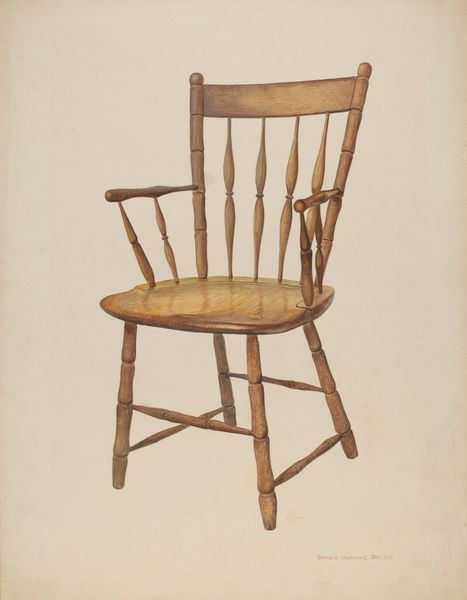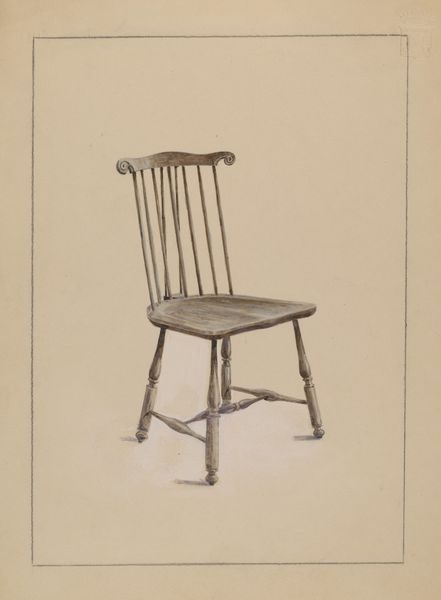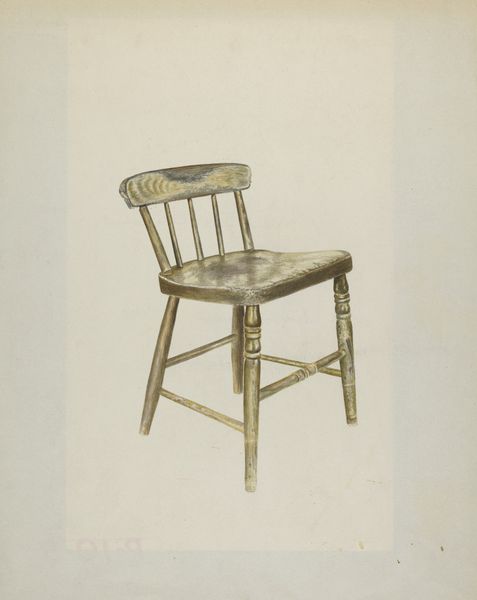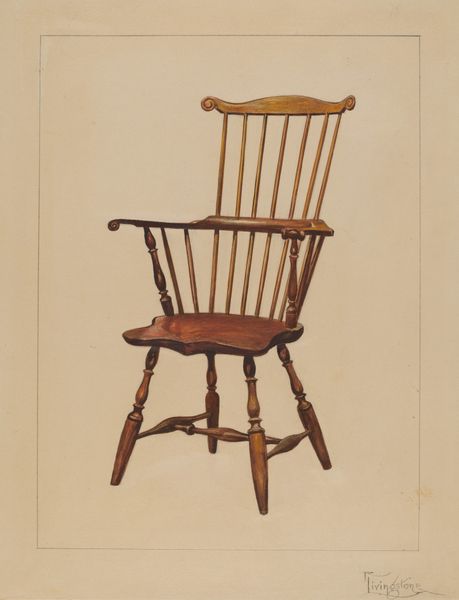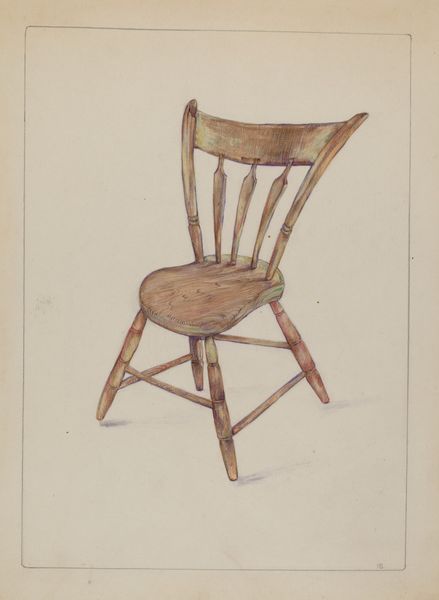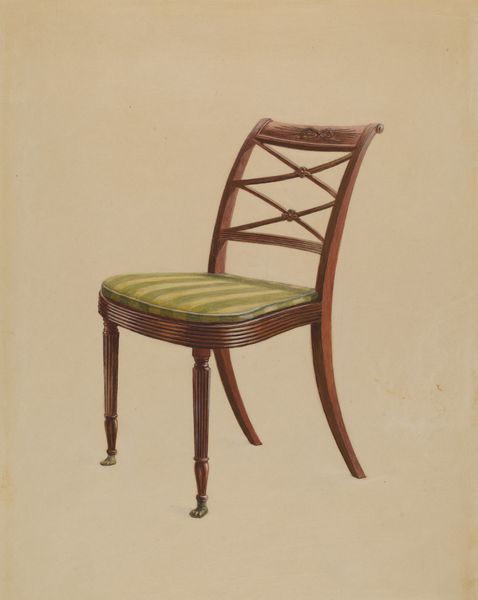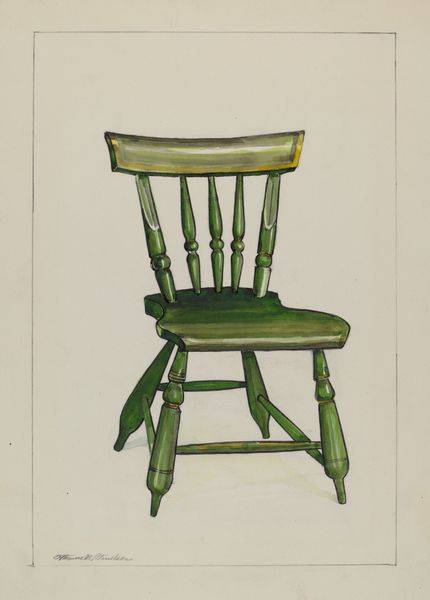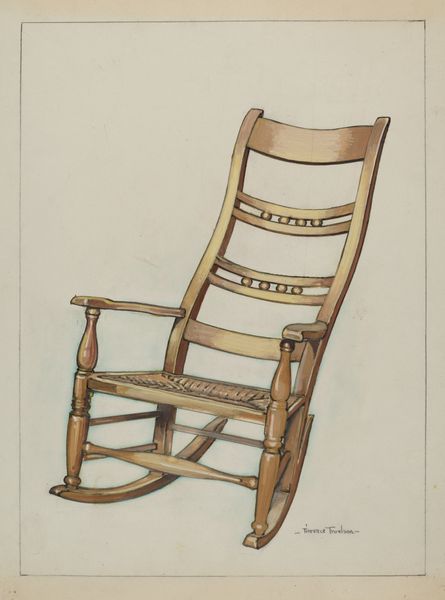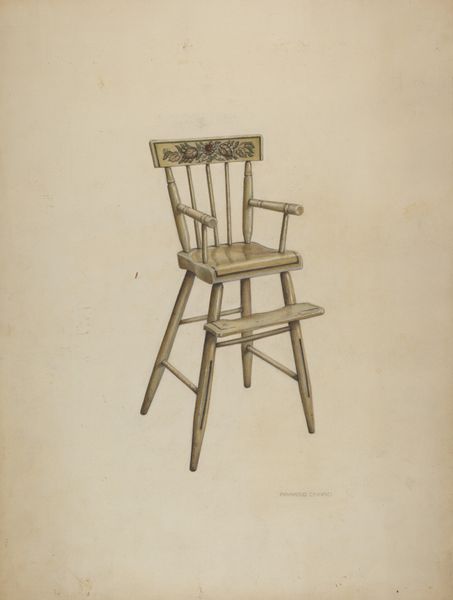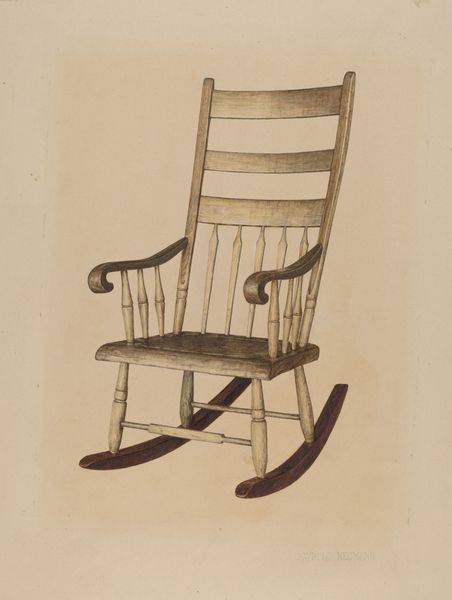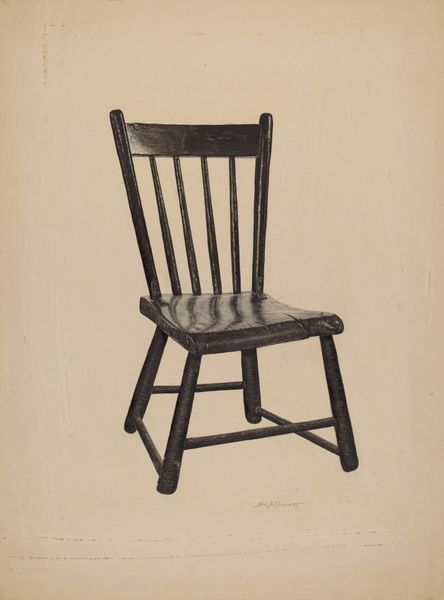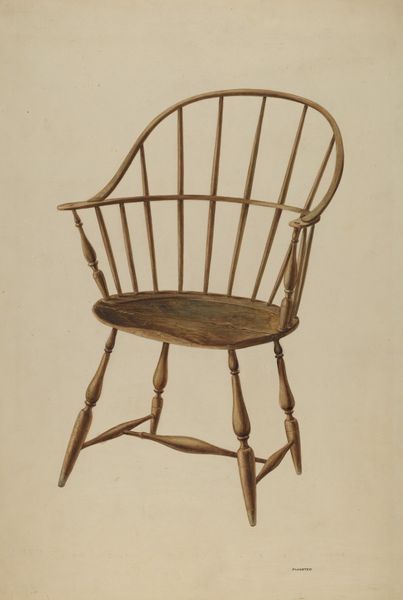
drawing, painting, watercolor
#
drawing
#
water colours
#
painting
#
oil painting
#
watercolor
#
watercolour illustration
#
watercolor
#
realism
Dimensions: overall: 35.4 x 24.4 cm (13 15/16 x 9 5/8 in.) Original IAD Object: 25"high; 14 1/2"wide; 12 1/2"deep, seat. See data sheet for dets.
Copyright: National Gallery of Art: CC0 1.0
Editor: This is Samuel W. Ford's "Child's Chair," from around 1937. It appears to be watercolor, or maybe even oil paint. It's a very simple, unassuming image. It reminds me a little of folk art. What strikes you about this painting? Curator: I see it as more than just a simple chair portrait. Consider the social context. This was painted during the Great Depression. Everyday objects, like this modest child’s chair, became potent symbols of domesticity and stability in a time of great uncertainty. Editor: So you are saying that, because it was painted during the Great Depression, a common object, a chair, represents much more? Curator: Exactly. It's a conscious choice to focus on something so ordinary. How do you think that emphasis on the mundane interacts with artistic movements of the time? Did artists embrace depicting the lives of the working class during the Great Depression? Editor: I hadn't thought about it that way! I suppose it is drawing attention to something we usually take for granted. Were there any government initiatives or art programs that might have supported artists like Ford during this time, that may have changed the content or availability of art to the common citizen? Curator: Precisely! The WPA, the Works Progress Administration, directly employed artists. Pieces like this one offered a sense of shared experience and resilience to a wide audience, beyond the traditional gallery setting. Think of the politics embedded in that accessibility! Now, does understanding that broader social context change your reading of the image? Editor: Definitely. Knowing that this chair represents stability during hardship and might have even been supported by a government program for the people adds a whole new layer to the image. Curator: Indeed. And consider how that shifts our understanding of the role of art during that era!
Comments
No comments
Be the first to comment and join the conversation on the ultimate creative platform.
